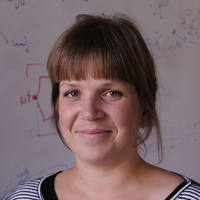Billker Group
Rodent models of malaria
Archive Page
This page is maintained as a historical record and is no longer being updated.
The Billker research group left the Wellcome Sanger Institute in 2018 and is based at The Laboratory for Molecular Infection Medicine Sweden (MIMS) within the Nordic EMBL Partnership for Molecular Medicine (http://www.mims.umu.se/groups/o-billker.html). This page is being maintained as historical record of the team’s research at the Sanger Institute and is no longer being updated.
The development of new drugs and vaccines against malaria poses one of the major challenges to current medical research. It must be grounded in the thorough understanding of the parasite’s biology, including its interactions with the host, and the Anopheles mosquitoes that transmit it. P. berghei provides a highly tractable model to study the fundamental cell biology of malaria parasites and many aspects of their interactions with host and vector.
During the team’s time at the Sanger Institue, we were particularly interested to learn how the cellular processes involved in sexual development and mosquito transmission are regulated through signal transduction pathways that control stage conversion, gene transcription and protein translation. To achieve this we often combined the global analysis of all other genes and proteins in the parasite cell with the targeted modification of one carefully chosen parasite gene. We also systematically analysed all parasite proteins for modifications that alter their function, such as the addition of phosphate or lipids.
Using these approaches we discovered a regulator of gene expression that functions as the master switch for the formation parasite stages in the blood that are essential to transmit Plasmodium to the mosquito (Sinha et al., 2014). We also found out that the same biochemical pathway regulates many different aspects of parasite biology by linking two intracellular messengers, calcium and a cyclic nucleotide (Brochet et al., 2014). We also showed how such discoveries can be exploited for drug development by demonstrating that a drug-like chemical inhibitor of a calcium dependent protein kinase can block malaria transmission to mosquitoes when administered to a mouse (Ojo et al., 2012).
The targeted modification of the genome is far more difficult in malaria parasites than in model organisms, such as yeast. To increase the rate at which discoveries can be made in P. berghei, we have developed protocols to produce more efficient genetic modification vectors and other molecular tools that allow researchers to rapidly switch parasite genes on and off. A production pipeline has now produced a genome scale set of gene knock out and tagging vectors for the P. berghei genome and pilot projects are well underway for other Plasmodium species. These resources are freely available to all researchers and can be viewed through the PlasmoGEM database. We also developed protocols to use PlasmoGEM vectors in genetic screens that query the functions of thousands of parasite genes at the same time. PlasmoGEM is a joint project with the Rayner group. It relies heavily on the reference genomes produced by Matt Berriman’s Parasite Genomics team.
Tools and resources for P. berghei genetic modification.
We have generated arrayed libraries of P. berghei genomic DNA with average inserts of ca. 8.5 kb. These are large inserts, considering that P. berghei DNA is very AT-rich, making it highly unstable in E. coli. We also developed a set of tools and protocols to engineer genomic DNA in E. coli with the help of transiently expressed phage recombinases, a process termed recombineering. These protocols are robust enough to work on 96-well plates. They allow us to turn library clones into complex genetic modification vectors at scale. Using this technology we are now producing genome-wide sets of genetic modification vectors and make these available as a free resource.
PlasmoGEM vectors have advantages over conventional designs: due to their long homology arms they integrate very efficiently. Furthermore, since the vectors never exist in a circular form, targeting essential genes does not select for episomes, thereby eliminating a major source of false positive results. The advantages of PlasmoGEM vectors now make it possible to generate complex mixtures of mutant parasites. Since each PlasmoGEM vector carries a gene-specific molecular barcode which can be read out and counted on a DNA sequencer, we can now study the growth of hundreds or even thousands of parasites in a single mouse.
We will now use this barcode counting strategy to design genetic screens. Using this approach we will be able to establish, for instance, which enzymatic pathways malaria parasites require to replicate in their different hosts, which parasite genes are needed for transmission to the mosquito, or which parasite genes are involved when an infection leads to severe disease.
Signal Transduction Pathways Regulating Sexual Development
Sexual development in Plasmodium is tightly linked to transmission by mosquitoes. We recently discovered a master regulator of sexual development (Sinha et al., 2014). Now we need to work out how this switch works and how it can be controlled by host factors. We are also screening more transcription factors and signalling proteins systematically to discover similarly important regulators of parasite development. Various projects now generate a deep understanding of some of our mutants through comparative analysis of transcriptomes, proteomes and secondary protein modifications, such as phosphorylation (Sebastian et al., 2012; Brochet et al., 2014).
Host Genes Regulating Parasite Development
There is an urgent need for new experimental models that can identify the role of host genes in parasite-host interactions. As genome-wide association studies discover more of the relevant natural genetic variation in human populations that controls susceptibility to malaria (Natural Genetic Variation), new tools to identify the underlying molecular mechanisms will be required. Some projects in the lab are developed jointly with the Cellular Genetics Programme to explore the use of in vitro differentiated mouse embryonic stem cells and human iPS cells to get at this problem.
Core team

Burcu Bronner-Anar
Technician Commitment Manager

Mr Gareth Girling
Advanced Research Assistant

Dr Frank Schwach
Principal Bioinformatician
Previous core team members

Dr Ellen Bushell
Senior Staff Scientist

Sarah Marsden
Research Assistant

Ruddy Montandon
Staff Scientist

Dr Daniele Muraro
Senior Bioinformatician

Gianmarco Raddi
MD-PhD Candidate

Andrew J C Russell
PhD Student

Dr Claire Sayers
Postdoctoral Fellow
